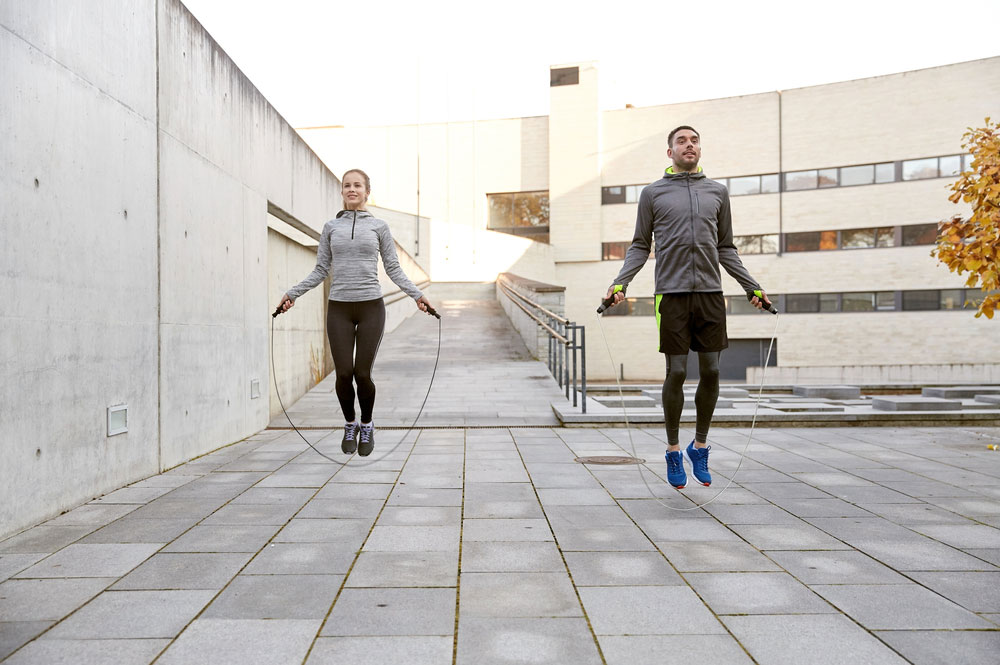High-intensity interval training (HIIT) is one of the most popular forms of cardio. It enables you to burn more calories in less time than other forms of exercise and can keep you motivated throughout the duration of a vigorous workout. Research suggests that these short but intense workouts may be more even more efficient than longer cardio sessions.
HIIT consists of pushing yourself all-out for a short burst, then slowing down the intensity to a recovery interval before repeating. An example could include sprinting to your limit for a short period of time, before slowing down into a jog, then repeating. Slowing down for a recovery interval will allow you to catch your breath and recuperate so that you’re ready to repeat the high intensity workout.
One of the benefits of HIIT is that it can significantly boost your endurance levels in a short period of time. A study by the American College of Sports Medicine revealed that as little as two weeks of interval training is equivalent to six to eight weeks of endurance training. Another benefit of HIIT is that it’s a great metabolism booster. Research has shown that your body will continue to burn calories even after your workout is, as it recuperates from the intensive exercise.
Incorporating interval training into your routine
The good news is that HIIT training can be performed anywhere, using a wide range of cardio machines. Even if you don’t have access to a gym, you can participate in HIIT cardio by running outdoors or jumping rope. Sprinting up a long flight of stairs before walking down, then repeating, is another challenging form of HIIT.
Getting started for beginners
If you’re new to HIIT, a good starting point is to push yourself to your limit using your desired cardio machine, then slowing down the pace for two minutes, before repeating. Keep repeating the cycle until you’ve completed 20-30 minutes of exercise.
Intensity
You can vary the high intensity and the recovery intervals according to your current fitness level. If you’re newly starting out, you’ll benefit from longer recovery intervals, whereas if you’ve been training for a while, you’ll need shorter recovery intervals in order to benefit. Goals are another dictating factor: those looking to burn fat will benefit more from shorter recovery intervals than those trying to build muscle.
Challenging yourself
As it gets more challenging, you can switch to one minute of maximum exertion, followed by a one-minute rest interval, then repeat. Eventually, you can increase this to two minutes of pushing yourself to the max with a one-minute rest. Keep making your recovery intervals shorter as you get fitter, until eventually your recovery intervals last no longer than 30 seconds.
HIIT and other forms of cardio
Exercise is a gift to your body and should be enjoyed. HIIT training is extremely efficient and can be completed in less time than lower intensity training, yet the most effective form of cardio is the one that you will stick with. Should you find HIIT too exhausting, then substitute any cardio exercise you enjoy. Any type of cardio, whether steady state (exercising at the same intensity), moderate intensity or HIIT training, will get you results, provided you do it consistently and in parallel with a good nutrition plan.
If you’re juggling a busy schedule and want to challenge yourself with more vigorous workouts, then HIIT training may be a perfect fit for you.

